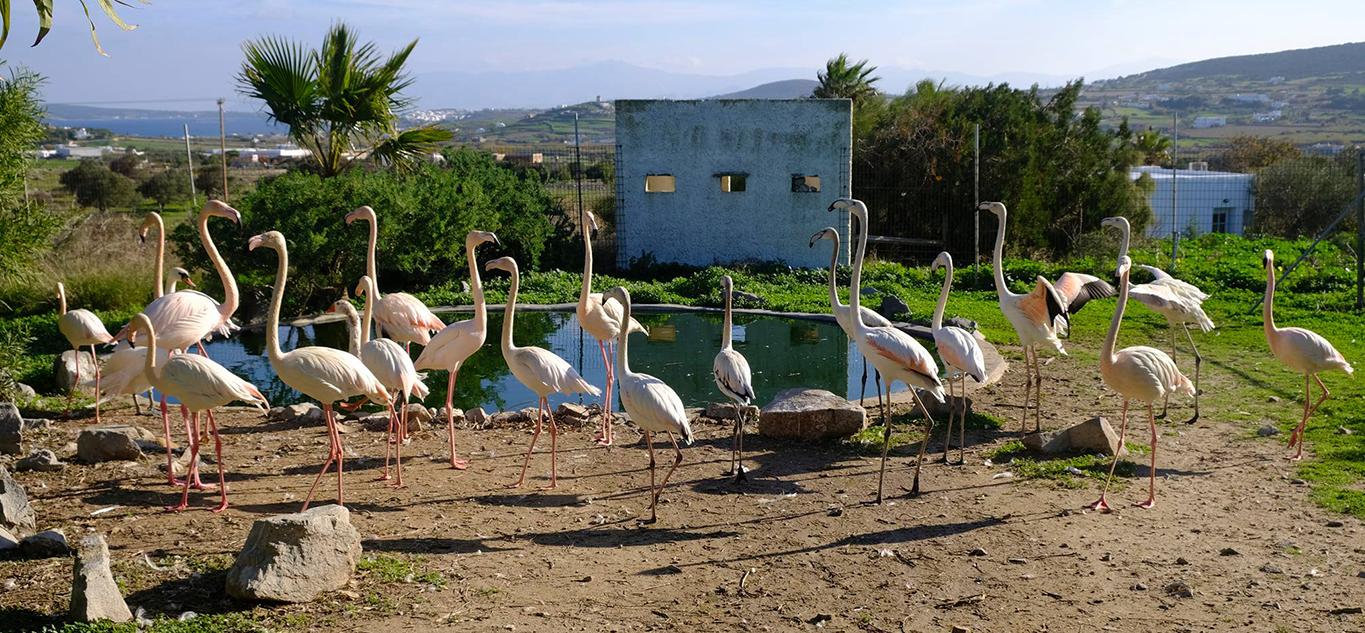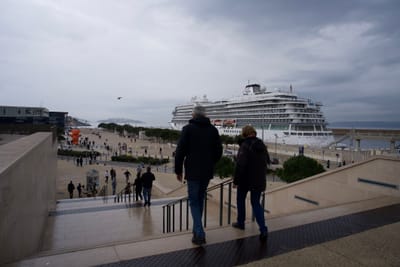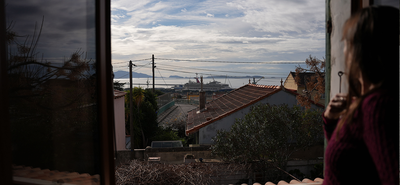- by Sarah Collins
ATHENS, Greece — When Marios Fournaris picks me up outside my hotel on a bright January day, he is carrying an injured hedgehog in a cardboard box. Together on his motorbike, we weave across the Greek island of Paros to the Aegean Wildlife Hospital, also known as Alkyoni. On account of my being British, Fournaris has also brought a selection of teabags, so he can offer me a cup of tea when we arrive. Opting for Earl Grey, I cradle my mug as we survey the aviaries he has painstakingly built to rehabilitate injured birds.
Fournaris, who is also a watchmaker and sports coach, has been rehabilitating wildlife on a voluntary basis for almost forty years. And since he founded the Aegean Wildlife Hospital in 1995, more than 17,000 wild animals — most of them birds — have been rehabilitated there. As he shows me around, Fournaris points out particular species that are endangered, from a medium-sized Eleonora’s falcon, of which there are only about 2,000 breeding pairs worldwide, to an Audouin’s gull, which to me looks very much like a common seagull but is in fact a threatened species worldwide and an endangered one in Greece.
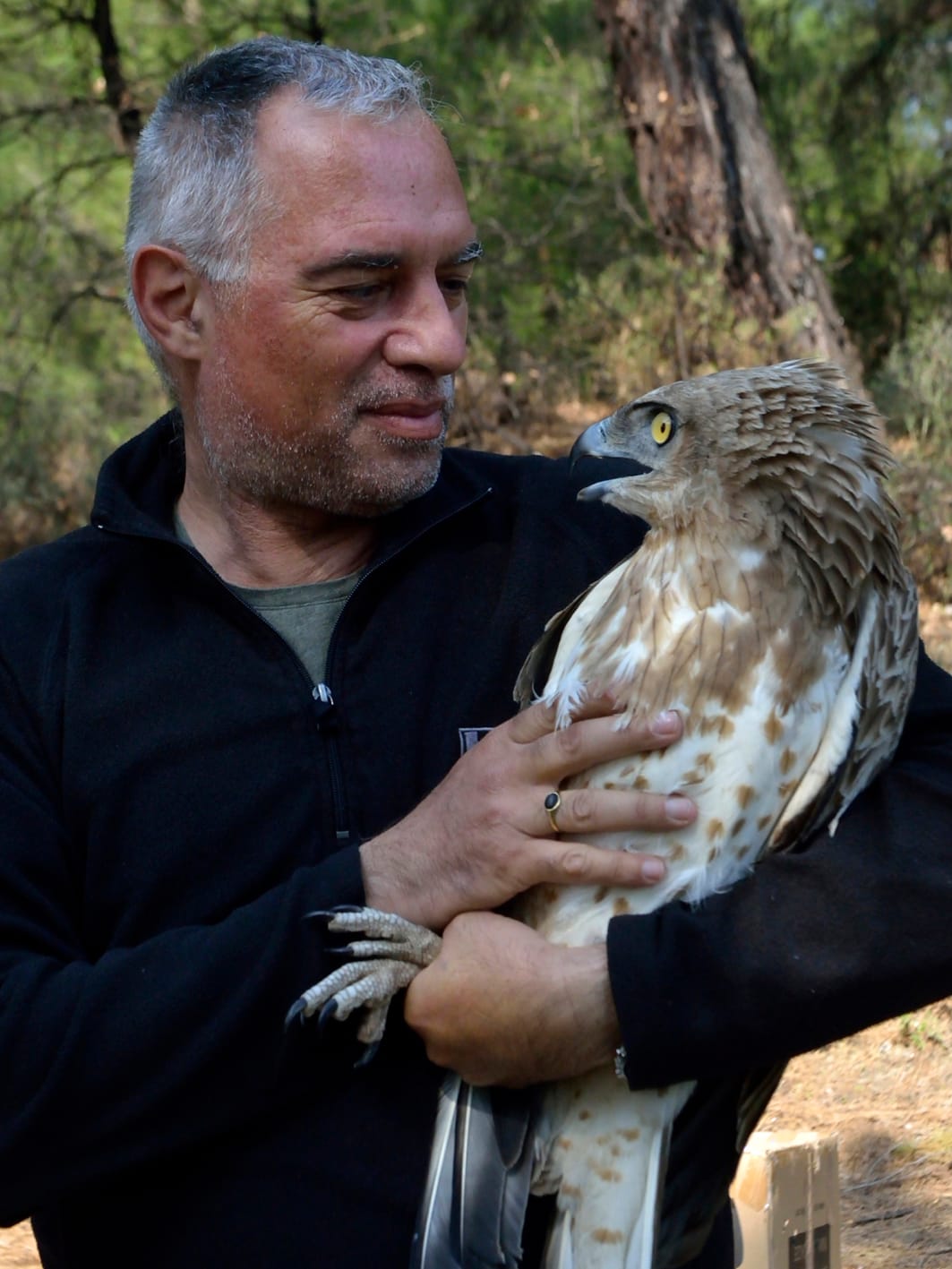
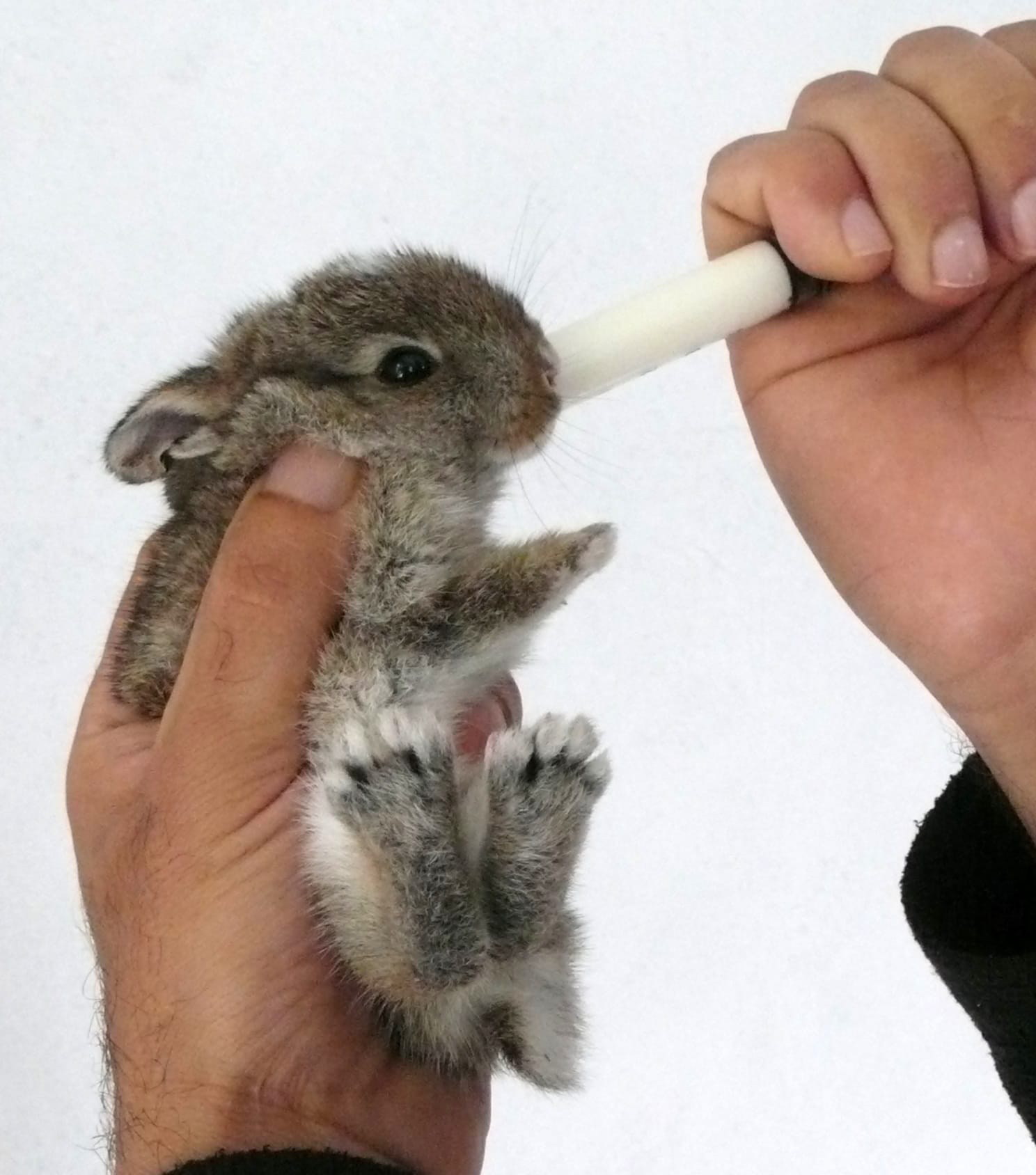
Marios Fournaris founded the Aegean Wildlife Hospital in 1995. Since then, more than 17,000 wild animals — most of them birds — have been rehabilitated there (Courtesy of Marios Fournaris)
The Cyclades are a vital stepping stone for many birds that migrate from Africa to Europe, including rare species like the Imperial eagle. Each year, millions of migratory birds fly over this chain of islands, which are also popular tourist destinations in the spring and summer (you may have heard of Santorini and Mykonos). But bird rescuers are concerned about what rising temperatures could mean for migratory birds.
Average temperatures in Greece have risen by 1.5 degrees Celsius (2.7 degrees Fahrenheit) over the last thirty years and the summer of 2024 was the hottest on record. Fournaris and his network of bird rescuers on the Greek islands are deeply concerned about climate change. “The heat is so extreme, I feel the trees are trying to commit suicide,” he says, gesturing to the thick tree that stands opposite the aviaries, which Fournaris has been forced to start watering. “They want to go higher to find some cooler atmosphere.”
Birds have long been considered “the canary in the coalmine,” with changes to their migration and breeding patterns serving as early indicators of temperature rises.
For Fournaris, the growing number of injured griffon vultures arriving at his hospital is “the most iconic example of how disasters start,” he says.
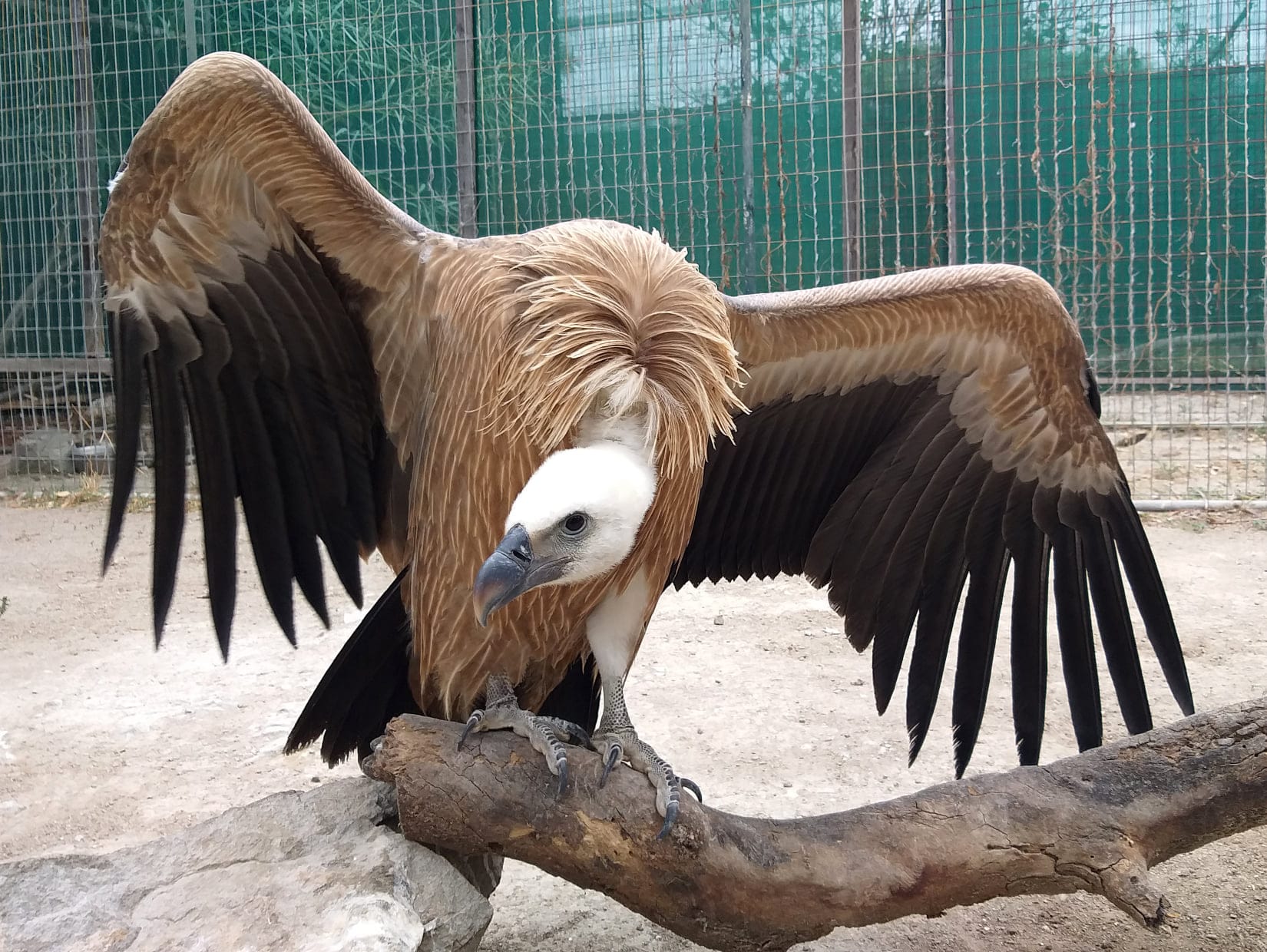
Ornithologists stress the vast variety of needs that different birds have, and while there’s still some uncertainty about the specific impacts of climate change on the routes and behaviors of migratory birds, Fournaris worries that escalating heatwaves, and the scarcity of food and water that they cause, pose a new threat. “I’m afraid the problem is going to become permanent.”
Birds’ survival is not only jeopardized by rising temperatures; other man-made hazards also threaten their lives in the Cyclades. In recent years, significant efforts have been made in Greece to protect griffon vultures from the main threat they face — poison bait being used by farmers for pest control.
Since 2015, though, Fournaris has noticed an increasing number of injured griffons being sent from Crete, where Greece's largest population of griffon vultures reside. “We always used to treat young vultures who were struggling,” he says. But now he has seven adult vultures in his care, with another six being nursed back to health on the neighbouring island of Naxos by fellow bird rescuers Giannis and Sophia Orfanos, some of which were recently released back into the wild.
On Paros, activist Nicholas Stefanou believes tourism that celebrates the wildlife on the island, like sea turtle conservation tours, could help draw attention to the issue.
But Apostolis Kalstis from the Greek Ornithological Society advises caution in drawing direct conclusions about how climate change is affecting specific birds like the griffon vultures, as its impacts vary from species to species — and, he says, griffon vultures are fairly resilient to drought. “We have seen that the increased number of exhausted vultures might be related to a persistent heatwave last July [2024], the time of year when one-year-old vultures make their first flights,” he says. “Climate change will probably make those long-lasting heatwaves more frequent.”
Fournaris keeps the griffons in a large aviary towards the back of the five-acre site and warns me, as we approach their enclosure, not to walk in front of them, as the movement can agitate them. The birds are huge, with a wingspan of two to three meters (six to 10 feet) and a ruffle of feathers around their necks.

But griffon vultures are not the only species that Fournaris is concerned about. He shows me a Cinereous vulture that was sent to him from the Evros region on the border of Türkiye. Cinereous vultures are the largest birds of prey in Europe and one of the continent’s most threatened species. Fournaris tells me, “We had a huge wildfire two years ago and it was a disaster for them — they didn't get burned because they flew away, but their nesting areas have been destroyed.” The 2023 wildfire in the Dadia Forest in Evros was catastrophic for biodiversity, with rare Cinereous vultures also affected. The following year, in 2024, Greece saw 7.5 percent more wildfires compared to the annual average of the previous 20 years, and wildfires have become increasingly difficult to control.
The efforts of devoted bird-rescuers like Fournaris are funded by donations and grants from several institutions. He and his colleagues in Crete and Naxos stop at nothing to protect the birds of southern Greece, ranging from rare eagles to herring gulls. In Naxos, a healthy population of griffon vultures thrives under the careful monitoring of the Orfanos family, who record their behaviour from a distance using zoom lenses, so as not to disturb them. But Fournaris laments how difficult life has become for the birds that make southern Greece — so popular with tourists — their home or a vital pitstop on their long migratory journey.
“We are building everywhere to host tourists,” Fournaris says. “There is no place anymore for nature.”
He likes to travel and has no issue with people visiting Paros but worries that a certain kind of tourism, the kind focused on hedonism, creates hazards for the bird population. “Birds are in a permanent war with us,” he tells me. “We do everything we can to kill them. We use electric wire, the cars drive very fast, we dry their fields, we put poison in their fields… they have to be intelligent to survive.”
As I finish my tea, Fournaris finishes feeding breakfast to the injured birds. From blind owls to pink flamingos, he treats them with the care of a devoted father. He tells me — as we head back to town on his motorcycle — that some injured birds seem to arrive of their own accord seeking treatment, including one buzzard who had been shot in the head by hunters. Fournaris saved the buzzard, as he has thousands of birds. This man, with his network of fellow rescuers, is part of the frontline defence protecting migratory birds from climate change.
Top image: Greater Flamingos at the Alkyoni hospital (Courtesy of Marios Fournaris)
Editor’s Note: This story is part of the series “Beauties Under Siege,” which offers a preview of the magazine we have in mind. It was produced as part of the first edition of the Magmatic School of Environmental Journalism.
